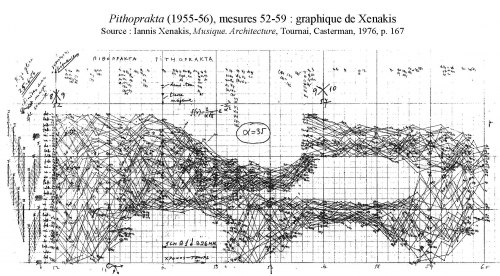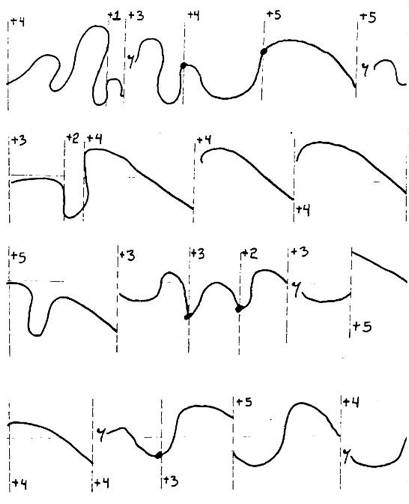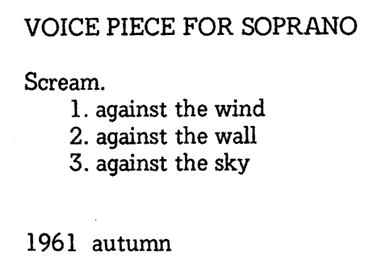
When we talk about scores, we are talking about creating representations and abstractions of music. They are not sound, but instructions for creating it. They are interpreted by someone or something.
Audio files are not sound itself, but abstract representations of it. Is an mp3 a score?
Common abstractions in scores are “notes”, “parts”, “tempos”.
Scores are another way a composer has to elucidate the underlying concepts of their piece. The fields of Musicology and Music Theory rely on this ability to identify, name, and reason about concepts and ideas that are preset in the music.

Pithoprakta (1955–56) is a piece by Iannis Xenakis for two trombones, 46 string instruments, xylophone, and woodblock, premièred by conductor Hermann Scherchen in Munich on March 1957.
The title translates as “actions through probability”. In the case of “Pithoprakta,” this relates to Jacque Bernoulli’s law of large numbers which states that as the number of occurrences of a chance event increases, the more the average outcome approaches a determinate end. The piece is based on the statistical mechanics of gases, Gauss’s law, or Brownian motion. Each instrument is conceived as a molecule obeying the Maxwell–Boltzmann distribution law, with Gaussian distribution of temperature fluctuation.
Similarly, looking at a composition done in the Twelve Tone Technique, it’s easier to pick out and verify the prime, retrograde, inversion, etc, in the score than it is to hear those things in the realization.
But what about music which is composed/produced with a DAW or through software? How can we discover and reason about the composer’s concept?
What is the purpose a score?
What is assumed? What is left to the discretion of the performer/realizer?

Braxton describes #108B as “a series of possible curve line sounds or curve line dynamic changes” (311), implying that the lines can indicate pitch and/or volume, and he likens the music first to “a continuum of stresses and ‘whispers’
Distilled even further, the score is just a set of instructions. They could be written in plain english.

Unlike most scores which are the source code to the music, Rainer Wehinger “Hörpartitur” or “score for listening” to Ligeti’s Artikulation was created after the music was published.
In the first Computer Music language, MUSIC, Max Matthews made a distinction between the sound generators and the sound organizers. These are often referred to as the “Orchestra” and the “Score”.
The “Orchestra” is the part of your code where you create all your instruments, effects, etc, and the “Score” is the part of your code where you sequence events or set values and dial in and control all the values in the Orchestra.
There is a similarity between code and scores. Neither is the sound itself, but a representation of the sound/music, meant to be interpreted to be realized. The way your code is written and organized, elucidates your conception of the work.